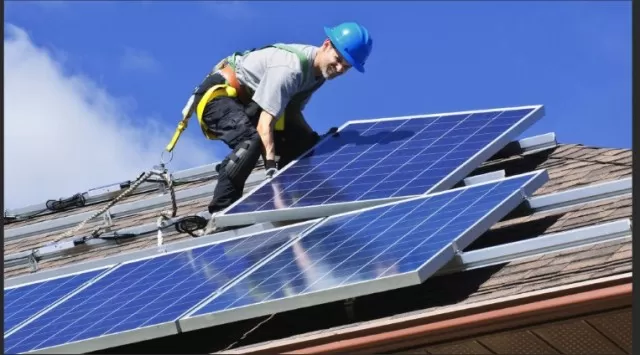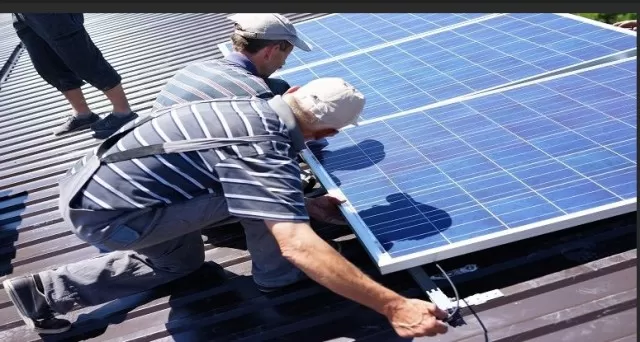Unlocking the Truth: Analyzing the Value of Solar Panels. Termites are tiny, wood-feeding insects that can cause significant damage to homes and structures. When it comes to the relationship between termites and mulch, the question arises: Will termites become more problematic if you have mulch around your house, or can certain types of mulch deter them?
Mulch is commonly used around homes and gardens for various reasons, such as moisture retention, weed suppression, and aesthetic enhancement. However, certain types of mulch, particularly those made from wood or bark, can attract termites due to their cellulose content, which serves as a food source for these pests. Consequently, homeowners may be concerned that having mulch around their house could increase the risk of termite infestations.
While termites are naturally drawn to wood-based materials, including mulch, the presence of mulch alone is not necessarily a guarantee that termites will infest a property. Several factors influence termite activity and the likelihood of an infestation, such as the type of mulch used, its proximity to the house, and the overall conditions conducive to termite survival.
Factors to Consider When Evaluating the Viability of Solar Panels for Homeowners

Solar panels are a worthwhile investment for many homeowners due to their potential for reducing energy costs and offering tax savings.
However, determining whether solar panels are suitable for a particular home involves considering various factors such as local energy costs, geographic location, roof pitch, and funding method.
Local energy costs: Solar panels are most beneficial for homes with high electricity bills.
If a home consumes over 500 kilowatt hours (kWh) per month, it is generally an excellent candidate for solar panels. In addition, surplus energy generated by the solar panel system can be sold back to the local utility company, providing an additional source of income.
Although this income may not cover the installation costs entirely, it contributes to the financial benefits of solar panels.
Geographic location: The amount of sunlight a roof receives is a crucial factor when considering solar panel installation.
Roofs facing west or south are optimal since they receive the highest amount of sunlight. However, it is important to assess potential obstructions such as large trees or neighboring buildings that could cast shadows on the roof.
Additionally, regional variations in sunlight levels affect the overall energy output of the solar panels.
Roof pitch: The design and angle of the roof play a significant role in determining the feasibility of solar panels.
For optimal sunlight absorption, solar panels should be installed at an angle between 15 and 40 degrees. If a roof has a steeper pitch, special mounting hardware is necessary to adjust the angle of the panels, which increases the labor and installation costs.
Funding method: The cost of a solar panel system typically ranges between $17,000 and $34,174, with the national average at $25,633.
The total price depends on the number of panels required to power the home, based on its size. Financing options have become increasingly popular for homeowners seeking to invest in alternative energy sources like solar power.
By utilizing financing, homeowners can spread out the cost over time, making solar panels more affordable and accessible.
Lowering Electric Bills with Solar Panels: A Smart Choice for Homeowners in High-Cost Energy Areas
Installing solar panels can provide significant cost savings on electric bills for homeowners, particularly those residing in regions with high energy costs.
Determining a home’s energy consumption and the associated expenses is crucial in deciding whether solar panel installation is a viable option. Factors such as average electricity costs, energy usage patterns, and net metering programs offered by local utility companies play a vital role in assessing the financial benefits of switching to solar power.
Average electricity costs: The cost of electricity varies across states, with Southern and New England states typically experiencing higher rates.
Homeowners living in areas with expensive electricity bills stand to gain substantial financial advantages by transitioning to solar power. By generating their electricity, they can reduce reliance on the grid and mitigate the impact of soaring energy costs.
Energy usage patterns: Before investing in solar panels, it’s important for homeowners to evaluate their energy consumption.
If a home doesn’t consume a significant amount of energy throughout the day, the resulting savings may not fully offset the upfront installation costs. Assessing energy usage habits and patterns can help determine the extent of potential cost savings and inform the decision-making process.
Net metering programs: Homeowners should inquire about their local utility company’s net metering program.
Net metering enables homeowners to send excess energy generated by their solar panel system back to the grid, earning credits. These credits are subtracted from the monthly electricity bill, effectively reducing costs.
Understanding the terms and conditions of the net metering program can provide a clearer picture of the financial benefits homeowners can expect from their solar panel investment.
Evaluating Solar Panel Viability Based on Sunlight Availability and Geographic Factors

When considering the installation of rooftop solar panels, it is important for homeowners to estimate the amount of sunlight their homes receive based on geographic location, orientation toward the sun, and roof type.
Assessing sunlight availability allows homeowners to gauge the potential energy generation from solar panels. Factors such as roof orientation, slope, and potential obstructions play a significant role in determining the viability of solar panel installation.
Roof orientation and slope: South- and west-facing roofs are ideal for solar panel installation as they receive the maximum amount of sunlight throughout the day.
To optimize solar panel efficiency, the roof should have a suitable slope, typically between 15 and 40 degrees, to capture the maximum solar energy. The angle ensures the panels are positioned to receive optimal sunlight, especially during peak energy-use hours.
Potential obstructions: Unobstructed access to direct sunlight is crucial for the performance of solar panels.
Trees or tall buildings that cast shadows on the roof can significantly diminish the photovoltaic output. Homeowners can utilize irradiance maps to assess the amount of sunlight their roofs receive.
By identifying potential obstructions, homeowners can determine whether solar panels are a worthwhile investment.
Geographic factors: The amount of direct sunlight a home receives is influenced by its geographic location.
States with minimal rainfall, cloud cover, and limited shade covering the roof are typically suitable candidates for solar panels. Regions with ample sunlight exposure, such as Arizona, California, Colorado, Florida, Kansas, Nevada, New Mexico, Oklahoma, Texas, and Utah, offer favorable conditions for solar energy generation.
Additionally, areas prone to extreme weather or frequent power outages can benefit from solar panel systems with independent power storage.
Electricity rates: The cost of electricity in a particular state is an important consideration when determining the financial benefits of solar power.
States with higher electricity rates, such as California, Connecticut, Massachusetts, and New York, provide greater potential for cost savings through solar panel installation. Conversely, states with lower electricity rates, such as Louisiana, North Carolina, Oregon, and Washington, may have comparatively less financial incentive for solar power adoption.
Evaluating Funding Methods for Solar Panel Installation: Choosing the Right Approach
Determining the worthiness of solar panel installation for homeowners also involves considering the funding method.
Homeowners have various options, including financing through loans, leasing arrangements, or paying for the system upfront. Each approach has its advantages and considerations, impacting the financial outcomes and ownership status of the solar panel system.
Loan: Homeowners can secure solar panel loans through solar companies or third-party lenders.
These loans typically have durations of 5 or 10 years, allowing homeowners to spread out payments over time. At the end of the loan term, homeowners own the solar panel system outright.
This option is beneficial for those seeking ownership and long-term cost savings while avoiding significant upfront expenses.
Lease: Leasing solar panels involves renting the system for a fixed monthly payment.
Lease terms can range from 10 to 25 years. At the end of the lease period, homeowners usually have the option to pay the remaining balance to take ownership of the solar panels or return them to the rental company.
Power purchase agreements (PPAs) often accompany these leases, requiring no upfront costs. However, homeowners should be aware of potential complications when selling their home and the existence of expensive cancellation fees.
Pay in full: Homeowners with the financial means to pay for the solar panel system upfront can maximize their savings.
Opting for full payment eliminates the need for interest charges or additional fees associated with loans or leases. By owning the solar panels outright, homeowners immediately reap the benefits of reduced energy costs and potential tax savings.
Leveraging Tax Incentives to Minimize Solar Panel Installation Costs for Homeowners

To make solar panel installation more cost-effective, homeowners should explore federal and state tax incentives available to them.
These incentives, including tax breaks, credits, and rebates, can substantially reduce the upfront expenses and contribute to long-term savings. Familiarizing oneself with these incentives is crucial for maximizing the financial benefits of transitioning to solar power.
Utility company rebates: Many utility companies offer rebates as incentives for homeowners who adopt solar power.
These rebates serve as financial incentives to offset the initial costs of installing solar panels. By partnering with local utility companies, homeowners can take advantage of these opportunities to further decrease the overall expense of solar panel installation.
Local and state government credits: Local and state governments also provide credits and incentives for homeowners who switch to solar power.
These credits can vary from state to state but can significantly contribute to reducing the cost of solar panel installation. Some states offer tax credits or sales tax exemptions, providing additional financial benefits.
It is recommended that homeowners research the specific incentives available in their state to make informed decisions.
Federal Investment Tax Credit (ITC): The Investment Tax Credit (ITC) is a federal tax credit available to homeowners who install solar panels or solar shingles.
This credit allows for a reduction of 30 percent of the installation cost until 2032. From 2033 onwards, the credit rate decreases to 26 percent and further reduces to 22 percent in 2034.
Currently, the ITC is scheduled to expire in 2035. Leveraging the ITC enables homeowners to significantly decrease the overall cost of installing solar panels or solar shingles on their homes.
*The information is for reference only.